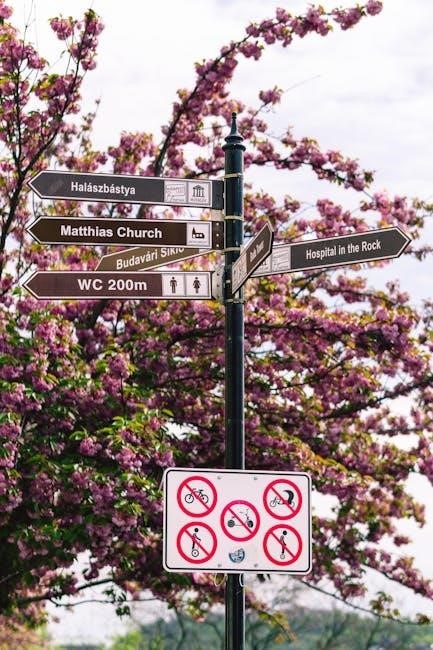Skateboard Deck Size Guide
Confused about choosing the right skateboard size? Wondering what size skateboard to purchase? This guide helps you navigate the world of skateboard sizes. We’re here to help you find the ideal skateboard size and shape for your individual riding style and experience level.

Selecting the right skateboard size is crucial for both beginners and experienced skaters. A skateboard’s size significantly impacts your control, stability, and overall performance. Skateboards are measured primarily by their width, typically ranging from 7.5 to 8.5 inches. The ideal size depends on factors like your shoe size, height, skating style, and personal preference.
This skateboard size guide will walk you through the essential considerations for choosing the perfect deck. We’ll explore how deck width correlates with shoe size, recommended sizes for different skating styles (street, park, transition), and other size factors like length and physical makeup. Understanding these elements will empower you to select a skateboard that enhances your abilities and minimizes the risk of injuries.
Whether you’re a beginner unsure of where to start or an experienced skater looking to fine-tune your setup, this guide provides the information you need. Discover the perfect deck dimensions to optimize your skateboarding experience and unlock your full potential. Let’s dive into the world of skateboard sizes and find the ideal fit for you.
Understanding Skateboard Width
Skateboard width is arguably the most crucial dimension to consider when choosing a deck. It’s measured in inches and typically ranges from 7.5 to 8.5 inches, though variations exist. The width you select significantly affects the board’s responsiveness, stability, and suitability for different skating styles. A narrower deck is generally easier to flip and maneuver, making it popular for street skating and technical tricks.
Wider decks, on the other hand, offer greater stability and foot space, which is beneficial for park skating, transition riding, and cruising. They provide a more solid platform for landing tricks and maintaining balance at higher speeds. Understanding how width influences your skating experience is essential for making an informed decision.
Factors such as your shoe size, height, and weight also play a role in determining the optimal width. Generally, skaters with smaller feet may prefer narrower decks, while those with larger feet may find wider decks more comfortable. Experimentation is key, but understanding the fundamental principles of skateboard width will guide you towards a deck that complements your individual needs and preferences. Choosing the right width sets the foundation for a comfortable and successful skateboarding journey.
Deck Width and Shoe Size Correlation
The correlation between deck width and shoe size is a significant factor to consider when selecting a skateboard. While personal preference ultimately reigns supreme, aligning your deck width with your shoe size can enhance comfort, control, and overall skating performance. Skaters with smaller feet generally find narrower decks (7.5″ to 7.75″) more manageable, as they require less effort to control and maneuver. This combination is often favored for technical street skating.
As shoe size increases, transitioning to slightly wider decks (7.75″ to 8.25″) can provide a more stable and balanced platform. These widths offer a good balance between maneuverability and stability, making them suitable for a variety of skating styles. Skaters with larger feet (US men’s size 9 and up) typically benefit from wider decks (8.25″ and above).
These wider decks offer ample foot space and increased stability, particularly when landing tricks or riding transition. Keep in mind that these are general guidelines, and individual preferences may vary. Some skaters with smaller feet may prefer wider decks for added stability, while others with larger feet may opt for narrower decks for enhanced flick and board feel. Experimentation is key to discovering what feels most comfortable and natural for your individual skating style.
Recommended Deck Widths for Different Shoe Sizes
Choosing the right deck width can significantly impact your skateboarding experience. A well-matched deck width enhances control, stability, and overall comfort. Here’s a breakdown of recommended deck widths based on shoe size. For skaters with US shoe sizes smaller than 4 (EUR size less than 36, UK size less than 3.5), a deck width of less than 7.5 inches is generally recommended. This smaller width allows for easier maneuverability and control for smaller feet.
If you wear US shoe sizes 4 to 4.5 (EUR size 36 to 36.5, UK size 3.5), consider a deck width between 7.5 and 7;875 inches. This range offers a good balance of stability and responsiveness. Skaters with US shoe sizes 4.5 to 6.5 (EUR size 36.5 to 39, UK size 3.5 to 6) may find a deck width between 7.75 and 8.0 inches suitable.
For US shoe sizes 6.5 to 9 (EUR size 39 to 42, UK size 6 to 8.5), a deck width of 8.0 to 8.25 inches is often preferred. This width provides ample foot space and stability for a variety of skating styles. Skaters with US shoe sizes larger than 9 (EUR size greater than 42, UK size greater than 8.5) may benefit from a deck width of 8.25 inches or wider. These wider decks offer enhanced stability and control, particularly for larger riders.
Skateboard Length Considerations
While deck width often takes center stage, skateboard length also plays a crucial role in overall performance and feel. Skateboard length, typically measured in inches, influences factors like stability, maneuverability, and the board’s responsiveness to your movements. Shorter boards, generally ranging from 28 to 30 inches, tend to be more agile and easier to flip, making them popular among street skaters who prioritize technical tricks.

These shorter decks are well-suited for quick turns and navigating tight spaces. Medium-length skateboards, usually between 30 and 32 inches, offer a versatile balance between stability and maneuverability. This length is a good choice for skaters who enjoy a mix of street and park skating.
Longer skateboards, exceeding 32 inches, provide enhanced stability, making them ideal for cruising, downhill riding, and transition skating. The increased length offers more foot space and a more stable platform, particularly beneficial for higher speeds and larger transitions. Keep in mind that personal preference also plays a significant role in determining the ideal skateboard length. Experimenting with different lengths can help you discover what feels most comfortable and suits your individual skating style. Consider your height, weight, and typical skating environment when making your decision.
Width for Different Skating Styles
The width of your skateboard deck significantly impacts its suitability for various skating styles. Different disciplines, such as street skating, park skating, and transition skating, often benefit from specific deck widths that optimize performance. Street skating, characterized by technical tricks, grinds, and slides on urban obstacles, often favors narrower decks.
These decks, typically ranging from 7.75 to 8.25 inches, offer enhanced maneuverability and responsiveness, making it easier to perform flip tricks and navigate tight spaces. Park and transition skating, which involves riding ramps, bowls, and vert walls, generally benefits from wider decks. These decks, typically 8.25 inches or wider, provide increased stability and foot space, allowing skaters to maintain control and confidence when tackling larger features.
Cruising and downhill skating prioritize stability and comfort, often utilizing wider decks as well. A wider platform provides a more secure stance and absorbs vibrations, enhancing the overall riding experience. All-around skating seeks a balance between maneuverability and stability, often opting for a medium-width deck between 8.0 and 8.38 inches. This size range allows skaters to explore different terrains and styles without feeling limited. Ultimately, the ideal deck width depends on your personal preferences and the type of skating you enjoy most.
Street Skating Deck Sizes
Street skating, a discipline celebrated for its technical tricks, creative use of urban environments, and emphasis on precision, often sees skaters gravitating towards specific skateboard deck sizes that complement this style. The ideal street skating deck size typically falls within the range of 7.75 to 8.5 inches in width, although personal preferences and shoe size can influence this choice.
Narrower decks, such as those between 7.75 and 8.25 inches, are favored by many street skaters due to their enhanced maneuverability and responsiveness. These decks allow for quicker rotations and easier execution of flip tricks, which are fundamental to street skating. The reduced weight of narrower decks can also contribute to a lighter feel, making it easier to control the board during complex maneuvers.
Wider decks, ranging from 8.25 to 8.5 inches, provide increased stability and foot space, which can be advantageous for skaters with larger feet or those who prefer a more solid platform. These decks offer a more forgiving landing surface, making it easier to recover from slightly off-center landings. Ultimately, the best street skating deck size depends on the individual skater’s style, preferences, and physical attributes. Experimentation and personal experience are key to finding the perfect fit.
Park and Transition Skating Deck Sizes
Park and transition skating, characterized by its focus on ramps, bowls, and vert, often necessitates a different approach to skateboard deck size compared to street skating. In this discipline, skaters typically favor wider decks to enhance stability, control, and overall performance on the varied terrain of skateparks. Generally, decks ranging from 8.25 inches to 9 inches or even wider are preferred for park and transition skating.
The increased width provides a larger platform for the skater’s feet, offering greater stability when riding up and down ramps, carving bowls, and executing aerial tricks. This added stability is crucial for maintaining balance and control at higher speeds and during more complex maneuvers. Wider decks also tend to be more forgiving, allowing for smoother landings and reducing the risk of slipping off the board.
Furthermore, the added surface area of wider decks can aid in distributing weight more evenly, making it easier to maintain control when performing grinds and slides on coping or other park features. While personal preference plays a significant role, the stability and control offered by wider decks make them a popular choice among park and transition skaters seeking to push their limits and conquer challenging terrain.
Other Size Factors: Length and Physical Makeup
While deck width is a primary consideration, skateboard length and a skater’s physical makeup significantly influence the ideal board size. Skateboard length, typically ranging from 28 to 33 inches, impacts maneuverability and stability. Shorter boards are generally more responsive and easier to flip, while longer boards offer enhanced stability, particularly at higher speeds.
A skater’s height and weight also play a crucial role in determining the appropriate deck size. Taller skaters may find longer decks more comfortable and stable, while shorter skaters might prefer shorter, more manageable boards. Similarly, heavier skaters may benefit from wider decks that provide greater support and stability, while lighter skaters might opt for narrower boards that are easier to control.
Ultimately, the ideal skateboard size is a balance between personal preference, skating style, and physical attributes. Experimentation is key to finding the perfect fit. Trying out different deck lengths and widths can help skaters discover what feels most comfortable and allows them to perform their desired tricks and maneuvers with confidence. Consulting with experienced skaters or skate shop professionals can also provide valuable insights and guidance in selecting the right board size.
Grip Tape Size and Application
Grip tape is the crucial abrasive material adhered to the top surface of a skateboard deck, providing the necessary friction for a skater’s shoes to grip the board. This ensures control and stability during various maneuvers. While grip tape manufacturers generally offer a standardized size, personal preference plays a significant role in the selection process. Skaters can choose from a variety of brands and styles to find what works best for them.
The application of grip tape is a straightforward process. First, ensure the deck surface is clean and free of debris. Then, carefully peel off the backing of the grip tape and align it with the deck. Starting from one end, gradually smooth the grip tape onto the deck, working out any air bubbles with a hard object like a screwdriver handle. Once the grip tape is fully adhered, use a sharp blade or razor to trim the excess material around the edges of the deck.

For a clean and professional finish, use a file or sandpaper to smooth the edges of the grip tape, preventing it from peeling or tearing. Numerous video guides are available online, offering step-by-step instructions on how to grip a skateboard deck effectively.
Skateboard Truck Size and Deck Width
Selecting the correct skateboard truck size is paramount for optimal performance and board control. The width of your skateboard trucks should correspond directly with the width of your deck. This ensures a balanced and stable ride, preventing wheel bite and maximizing responsiveness.
To determine the appropriate truck size, measure the width of your skateboard deck at its widest point. The truck axle width, which is the distance between the ends of the truck axle, should be as close as possible to the deck width. A slight difference of up to 0.25 inches is generally acceptable, but it’s best to aim for a precise match.
Using trucks that are too narrow can make the board feel unstable and prone to tipping. Conversely, trucks that are too wide can hinder turning and make the board feel sluggish. Most skateboard manufacturers provide truck size recommendations based on deck width, making the selection process easier. Consult these guides or seek advice from experienced skaters or skate shop professionals to ensure you choose the perfect truck size for your deck. Proper truck sizing enhances your skating experience and enables you to perform tricks with greater confidence and precision.
Skateboard Wheel Size Considerations
Skateboard wheel size plays a crucial role in determining your riding experience, influencing speed, acceleration, and the ability to roll over obstacles. Wheel sizes typically range from 50mm to 60mm for street and park skating. Smaller wheels (50-53mm) are lighter, accelerate quickly, and are ideal for technical skating maneuvers, such as flip tricks, where responsiveness is key.

Larger wheels (54-60mm) offer greater speed, roll more smoothly over rough surfaces, and maintain momentum better, making them suitable for cruising, transition skating, and vert ramps. The choice depends on personal preference and skating style.
Consider the hardness of the wheels, measured on the durometer scale (A). Softer wheels (78A-90A) provide more grip, absorb vibrations, and are better for rough terrain. Harder wheels (95A-101A) are faster, slide more easily, and are preferred for smooth surfaces like skate parks. For street skating, a medium hardness (97A-99A) is a good compromise. Ultimately, experiment with different wheel sizes and hardness levels to find the perfect combination that suits your individual needs and enhances your skateboarding performance.
Skateboard Size Chart for Children and Adults
Selecting the appropriate skateboard size for children and adults is essential for safety, control, and overall enjoyment. A skateboard size chart provides a general guideline based on shoe size and age, helping beginners choose a suitable deck width. For younger children (under 5 years), a mini or micro-sized board with a width of 6.5 to 7.25 inches is recommended, offering better control and maneuverability for smaller feet.
As children grow (ages 6-8), a mid-sized board with a width of 7.25 to 7.5 inches is more appropriate, providing increased stability and room for growth. Teenagers and adults typically ride boards with widths ranging from 7.5 to 8.5 inches or wider, depending on shoe size and skating style.
Individuals with smaller shoe sizes (men’s size 6.5 to 9) may prefer narrower decks (7.5 to 8.0 inches), while those with larger shoe sizes (men’s size 9.5 and up) often find wider decks (8.0 inches and above) more comfortable and stable. Remember that these are just general recommendations, and personal preference plays a significant role. Experimenting with different deck widths is encouraged to find the perfect fit.
